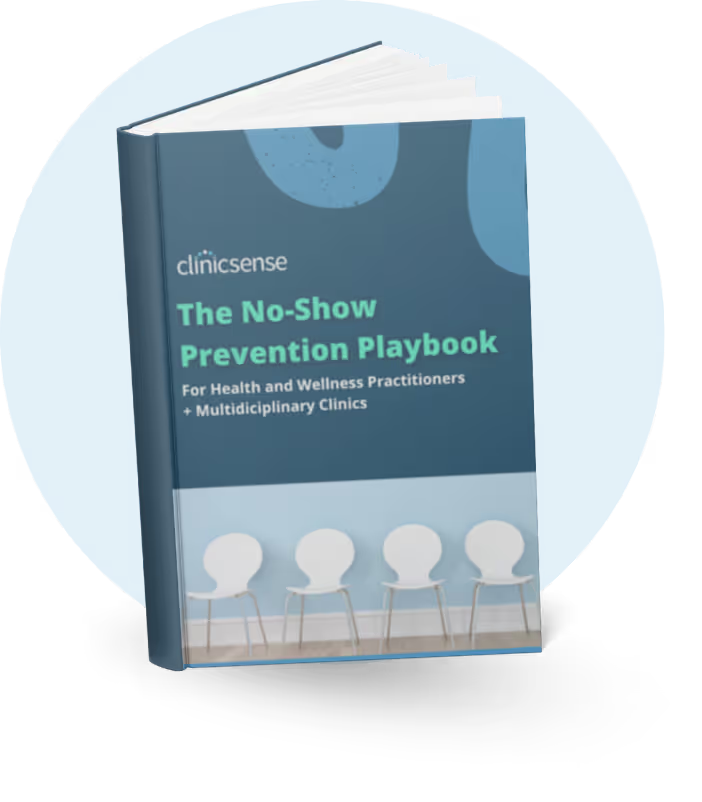Physical Therapy Business Tips
August 15, 2024

The world of physiotherapy is constantly changing, and one of the biggest examples of this is through new physiotherapy technology options designed to improve patient care.
It can be overwhelming and difficult to keep up with the latest tech trends, make informed decisions about what’s going to fit well for your physiotherapy practice, and determine the best way to implement new tech into your workflows.
Don’t worry, because we’re about to cover the most important physiotherapy technology options for physical therapists and clinic owners to be aware of, what makes them worthwhile, and how to best use them in your day-to-day practice.
There are many types of physiotherapy technology available to physiotherapists, including telehealth and remote monitoring, clinician apps, augmented and virtual reality, wearable fitness trackers, and biometric tracking. These technologies can be used to increase engagement, improve outcomes, and enhance the patient experience.
Knowing which physiotherapy technology makes the most sense for your practice and your patients takes some trial and error, but understanding each of these technologies individually is the best way to make an informed decision. Let’s zoom in on each of these one by one.
Telehealth, which took the world by storm during the COVID-19 pandemic, is a valuable way to deliver care to patients through video calls. Many clinic owners use telehealth to augment their standard services, increase touch points with patients, and increase access for those who can’t make it into the clinic regularly.
Remote patient monitoring (RPM) is similar to telehealth in that patients aren’t required to be in your clinic, but differs in that only engagement from the patient with a digital treatment tool is required. For example, if patients are regularly logging their status and activity through an approved tool, practice owners participating in remote monitoring reimbursement plans can be reimbursed for remote monitoring while also enhancing the patient’s experience.
Whether or not to use telehealth and remote monitoring ultimately depend on the way your practice is organized, the conditions you help your clients with, and the physical therapy software that you use to get things done.
In addition to effective physical therapy software, clinician apps like home exercise program builders and continuing education platforms can take your physical therapy care to the next level.
Physitrack is a great example of a home exercise program builder that a physical therapist can use to build and prescribe programs to their patients. Featuring detailed videos and descriptions, physiotherapists can assign personalized programs to their patients, change them as patients make progress, and even use remote monitoring.
MedBridge is a two-in-one solution that features a home exercise program builder and a continuing education platform for physiotherapists who practice in a variety of different specialties. In addition to exercise and education features, MedBridge also offers plans for telehealth, remote monitoring, and specialty certification prep courses.
Gaining popularity through consumer tech like the Meta Quest, virtual reality (VR) is an upcoming physiotherapy technology option that replaces a patient’s visual field with a screen that can be used for a variety of learning and exercise purposes.
Although virtual reality has many promising applications, the biggest challenge with this technology is that a patient’s natural vision is obstructed, making activities like walking and balancing unsafe.
.avif)
Easily among the most cutting-edge physiotherapy technology options available, augmented reality (AR) uses virtual reality technology to enhance what a patient sees (think Apple Vision). For example, a patient recovering from a stroke can use AR to visualize a series of targets or obstacles as part of movement retraining.
Because augmented reality adds to a patient’s natural vision, rather than obstructing it, it’s a very promising option for more involved activities like walking and balance in a treatment plan. Although still emerging, the uses of AR for home exercise programs are very promising.
Most of us are familiar with wearable fitness trackers like Google, Apple and Garmin watches as a fashionable way to check messages and watch the weather in real time, but they’ve actually become exceptional tools for improving patient care. More importantly, patients are engaging with their fitness trackers more than ever and want your help to make the best use of them.
In fact, a review suggested that interventions that incorporate wearable devices increase physical activity by approximately 1,800 steps per day, walking by 40 minutes per day, and moderate-to-vigorous physical activity by 6 minutes per day. That’s a big deal!
On top of this, wearable fitness trackers are an excellent way to monitor a patient’s cardiovascular fitness over time and assess the effectiveness of a training program with data that would be challenging to track even in the clinic.
Devices like Oura Rings and WHOOP Watches have been gaining popularity among patients because they take many of the elements of a traditional fitness tracker and extend the scope, honing in on concepts like sleep quality, stress levels, and heart rate variability.
Although these biometric devices are on the cutting edge of health data and may offer benefit to some of your patients, some of the biometrics they assess are still in the early stages of research and may be considered fringe. So, while you may not incorporate them into your care directly, you’ll want to be well versed in answering questions that your patients bring to you about them.
Having a one-stop solution for your practice is essential in today’s physiotherapy technology environment. ClinicSense is an all-in-one physiotherapy software designed by clinicians to simplify patient care, improve revenue streams, and help your practice adopt new technology without compromising on the quality of your services.
Whether you’re brand new to physiotherapy software, or looking to update your practice’s toolkit with a free SOAP notes template, ClinicSense offers a number of innovative features designed with you and your clients in mind.
Charting is an unavoidable responsibility for all physiotherapy practices, and with progressively more detailed charting requirements in recent years, having highly customizable templates for your SOAP notes is essential.
ClinicSense provides a streamlined SOAP note experience that supports customizable note templates that not only save you time on each note, but help you get the most valuable information into your notes for each session. Even better, you can get a SOAP notes free trial right now.
Word-of-mouth marketing can take your physiotherapy practice far, but rarely all the way. For this reason, having intuitive and streamlined marketing and communication tools built into your physiotherapy software should be a non-negotiable feature.
With built-in email marketing, check-ins, and appointment reminders, ClinicSense gives your patients and potential patients an easy way to keep in touch with your practice. Even better, these software features can be automated to free up your time for actually working with your clients!
.avif)
While some physiotherapy practices have a dedicated front office staff to book patient appointments, maintaining your own client schedule is becoming the norm. Without easy-to-use software, it’s easy to fall behind on your day and miss valuable time working with your clients.
ClinicSense offers one-click easy online booking with adjustable appointment types and lengths, so you can get moving to your next appointment seamlessly. If you’re used to feeling bogged down by maintaining your schedule, this is an essential physiotherapy software feature.
Even with a well-planned schedule, your clients may still forget about their appointments or need to reschedule from time to time. Without a simple solution for reminders, you can end up with a scattered schedule and lost revenue.
With built-in Email and SMS reminders, ClinicSense sends your patients reminders at specific times before their appointments to help them make the most of every appointment in their plan of care (saving your lost revenue, too!).
Just like an effective treatment plan, any private practice owner should know the value of well-designed treatment packages. Put simply, offering treatment packages at your physiotherapy practice benefits your clients with simplified purchases, bolsters your reputation as a unique provider, and enhances your bottom line.
ClinicSense makes it easy to sell treatment packages to your clients with custom package creation features that allows you to arrange your services in any way you like. Just name your service package, enter a price, and you’re good to go.
With the rise of technology making most things in life more convenient, patients expect to be billed for their care in quick and easy ways, not with paper invoices or over-the-phone card purchases. Online invoicing and payments is the best way to get consistent revenue from your customers with fewer bumps along the way, ultimately helping your practice thrive long term.
All-in-one physiotherapy software should automate and optimize your invoicing process to maximize your earnings and client satisfaction. With ClinicSense, you can generate online invoices, automate reminders for outstanding balances, and enjoy seamless payments from your clients.
If you’re looking to make the most of physiotherapy technology in your practice, ClinicSense is a great way to start simplifying your work and optimizing your results. Start a free trial of our physiotherapy clinical notes software today!


.avif)
.avif)
.avif)









For 14 days